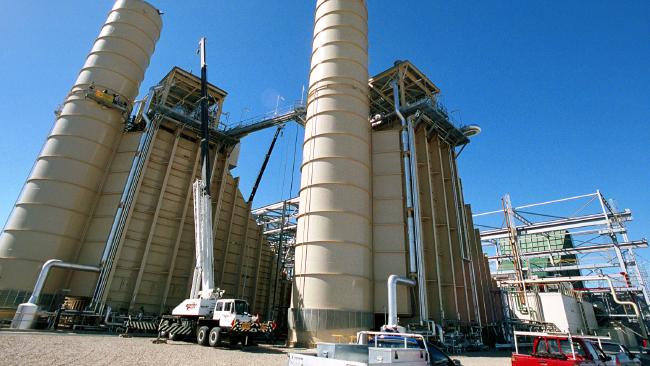The Australian Energy Regulator has found that re-bidding by leading gentailers Origin Energy and AGL Energy in the South Australian electricity market in August and September caused price spikes that loaded more than $17 million of additional costs onto consumers and other generators.

In yet another damming report on the bidding practices of the dominant fossil fuel generators in South Australia, the AER puts says it is clear that re-bidding for Frequency Control and Ancilliary Services by the major players caused the price spikes in August and September.
This adds to reports on how the gas generators had “gamed” the system and lifted revenues by a total of some $200 million by some estimates. See our story: Fossil fuel industry holding Australian economy to ransom, and helps put the lie that wind and solar are somehow to blame for the state’s high electricity costs.
FCAS helps provide network security, and on three occasions in those months, because of work on the main interconnector between Victoria and South Australia, the Australian Energy Market Operator invoked a mandatory local regulation service.
This requires fossil fuel generators to provide 35MW of capacity, just in case something goes wrong. The problem wasn’t a shortage of capacity, because as the AER notes, AGL, Origin and Engie between them have 446MW of such capacity available.
Initially, the 35MW was met by relatively low prices of well below $500/MWh. But then the rebidding started to occur.
“On separate days, Origin and AGL rebid to reduce the volume of low prices regulation services to less than the required 35MW,” the AER writes.
“This rebidding resulted in regulation FCAS prices exceeding $5,000/MWh over a sustained period of time.”
Indeed, the AER puts the combined cost of these price spikes to South Australian generators and consumers at around $17 million. The total cost of this regulation requirement has totaled $47 million since it was introduced a year ago.
In one instance, on August 11, the AER says there was enough capacity to suggest that FCAS prices would not rise above $100/MWh.
But Origin Energy started rebidding its capacity from the Quarantine power station, and then at 9.46am rebid 5MW of capacity from zero dollars to $11,900/MWh and above. This meant that there was now only 34MW of capacity bid below $5,000/MWh.
To meet that final one MW of capacity, the market bid the price up to $11,469/MWh – where it stayed for nearly two hours.
Origin repeated the dose at 12.35pm, keeping prices at $10,990 until 7.25pm. The extraordinary price spike – for a service that was ultimately not needed – lasted for a total of 9 hours before the market operator finally decided it had had enough and imposed a market cap.
Origin justified its decision on the “financial optimisation” of their energy and FCAS portfolio. No kidding. Others would describe that as exploitation, but according to the ACCC that’s OK too.
The AER says this added $7 million to the cost of FCAS – a service that normally attracts a daily price of just $220,000, but which the generators can exploit when they control the market – as they have done on repeated occasions in the wholesale market.
There is some controversy over this FCAS requirement, mostly because of the ability of the major generators to exploit the market.
But even though this is not the first time that they have done this – either in the FCAS market or the wholesale electricity price market – the pricing regulator has turned a blind eye, simply saying that the market players have every right to exploit their market power.
The irony is that the price spikes in South Australia are being blamed – by the fossil fuel industry and conservative politicians – on renewable energy, when it is clear it is the action of the dominant market players.
Other technologies such as battery storage might be able to provide similar services, and break the stranglehold on the market by the major generators, but the fossil fuel generators and their lobby group have argued furiously against proposed rule changes that would make it easier for new competitors.
Meanwhile, the South Australian Labor government appears intent on doubling up on its reliance on gas-fired generators by skewing the requirements for a major government electricity tender towards gas fired generation and away from new technologies such as battery storage and solar towers with molten salt storage.
Perhaps its time for some companies to be held to account, and for the politicians and their advisers to wake up.










